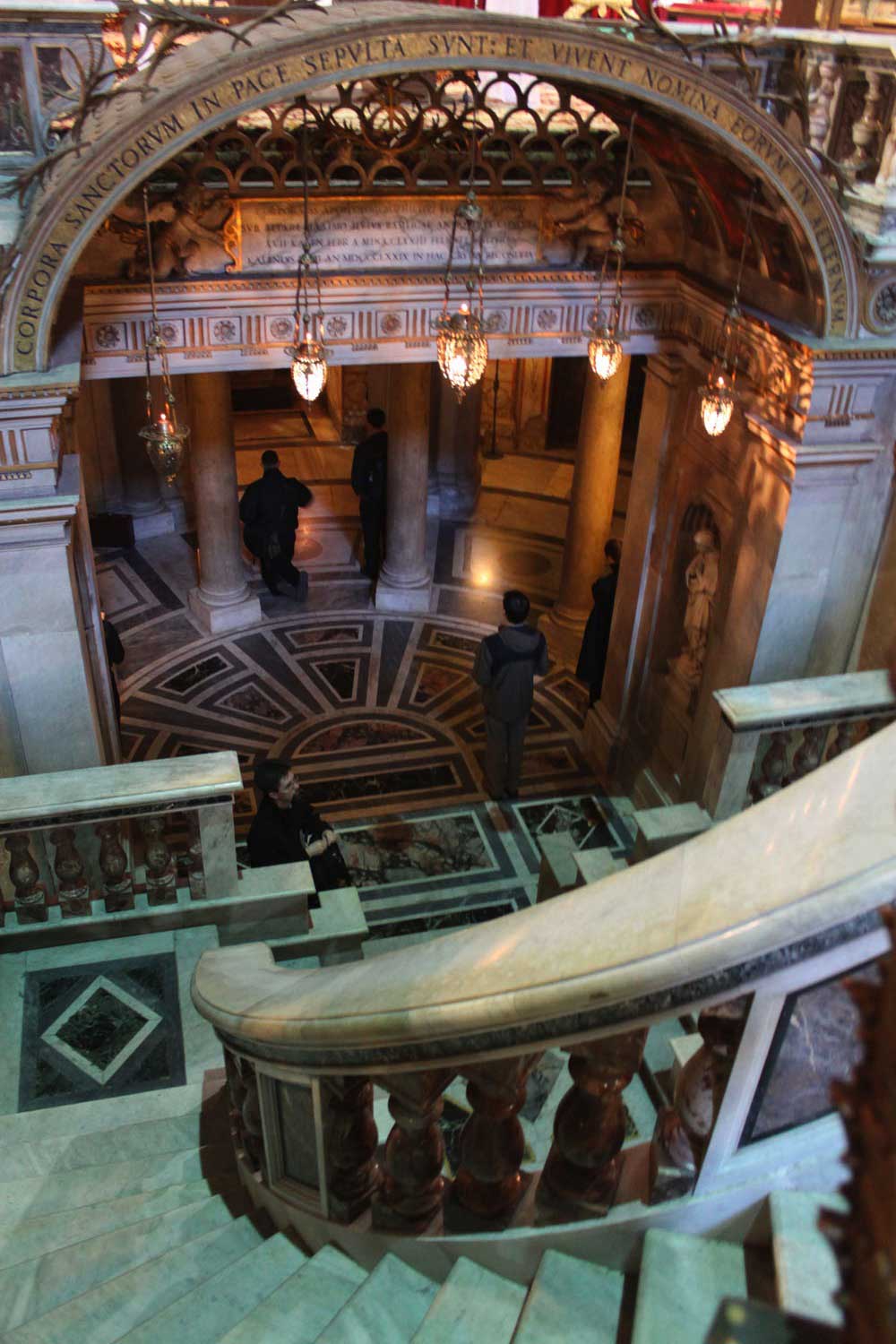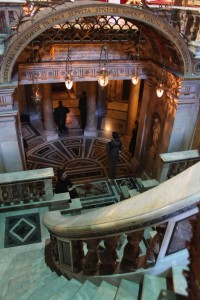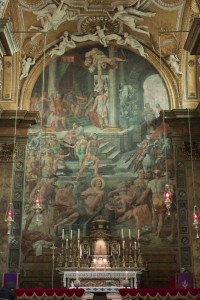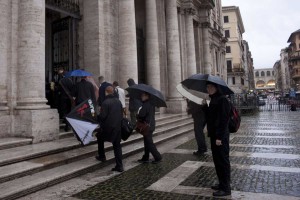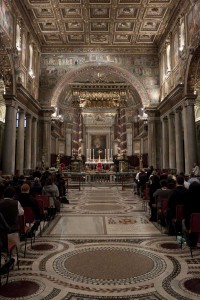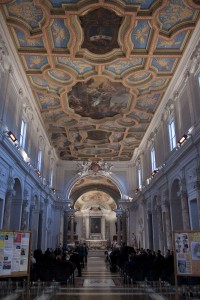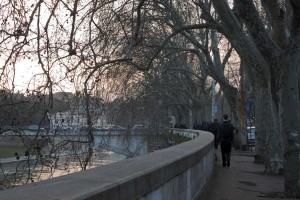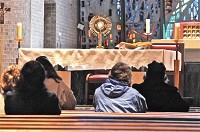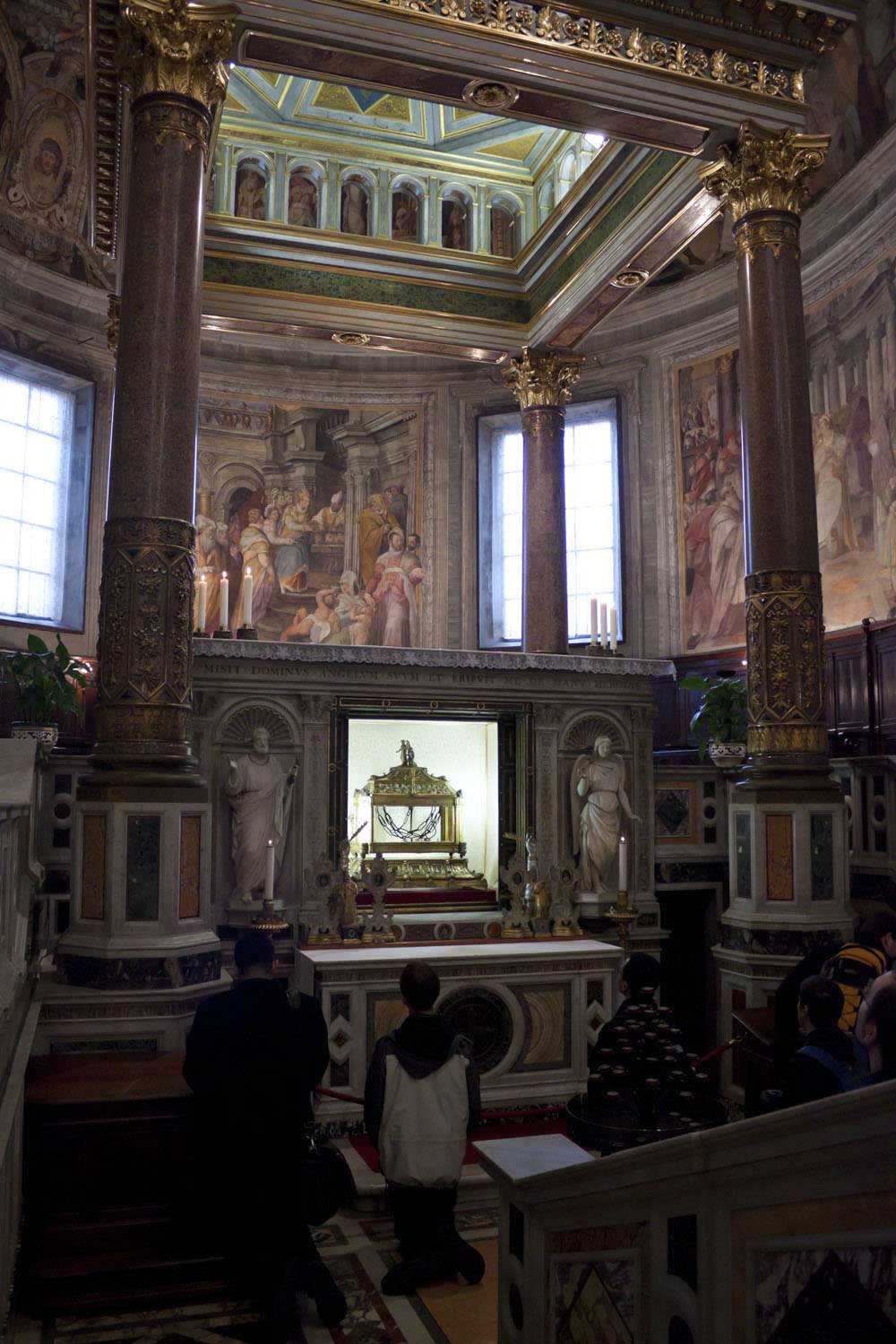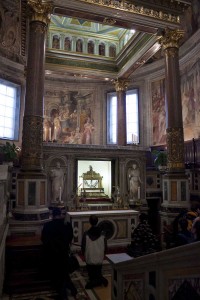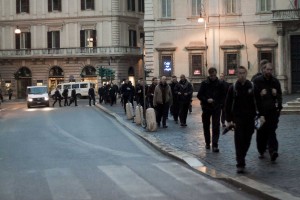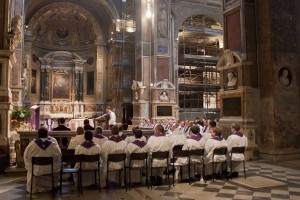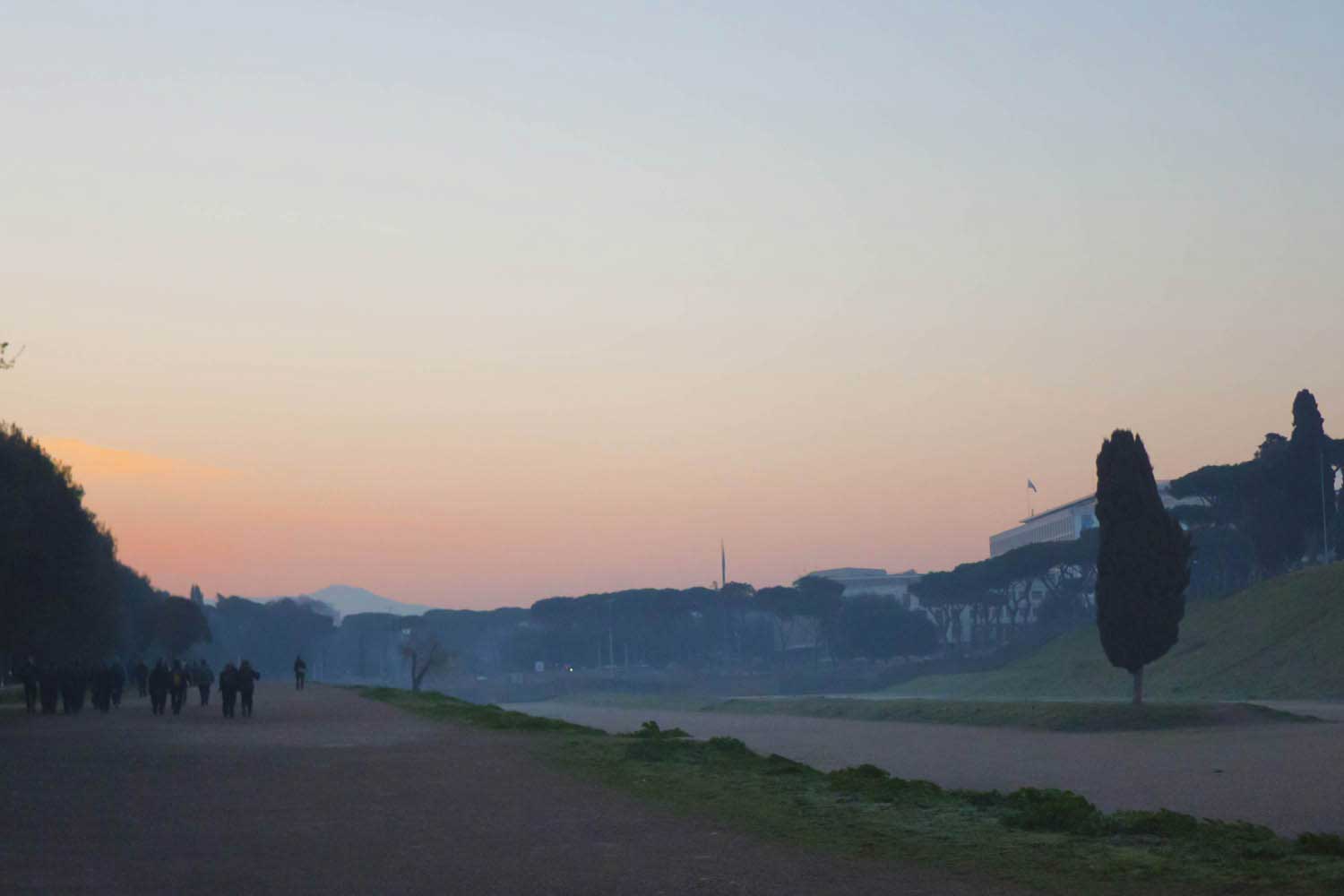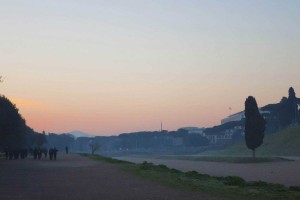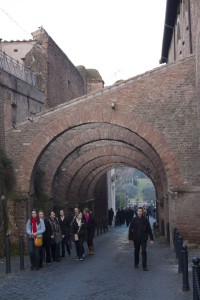This morning pilgrims continued their Lenten journey along a well trod path as they made their way to the Basilica Santi XII Apostoli, where relics of Sts. Philip and James the Lesser are housed beneath the high altar. As the pilgrims walked and prayed they traversed the Piazza del Popolo, came behind the Pantheon and passed by the Church of Santa Maria sopra Minerva, till finally arriving at Piazza Ss. Apostoli. The church, located near both the Gregorian and Angelicum Universities, is one well known to the students of the North American College. In fact, today’s walk is one that many seminarians make daily to go to and from school and the College. This serves as a great reminder that our journey with the Lord plays itself out largely in our “regular” day-to-day lives.
Today’s readings invite us to a life of greater virtue. From the prophet Ezekiel we hear, “He shall live because of the virtue he practiced,” and in the Gospel Jesus instructs us that we must strive for righteousness greater than that of the scribes and Pharisees. They observed the externals of the Jewish laws but lacked a proper disposition of heart. We are blessed to have the Lenten season each year because it gives us a chance to examine the dispositions of our own hearts. Jesus makes it clear that we can’t just aim at fulfilling minimum obligations, but that we must strive for hearts and minds that, with God’s grace, are free from even harboring ill thoughts, feelings or intentions towards others. This goal finds its practical fulfillment in our day-to-day lives.
The season of Lent with its call to greater prayer, fasting and almsgiving allows us a chance to examine our attitudes and intentions and to ask God’s grace to help us love more like Him. By cooperating with His grace we’ll find our day-to-day path transformed. It will gradually become more and more the path of Christ. We’ll change too! We’ll become a greater blessing to ourselves, our family, our friends, and everyone we encounter as we increasingly grow in resemblance to Christ, Our Lord.
Written by Francisco Aguirre
Photos by Fr. Justin Huber

